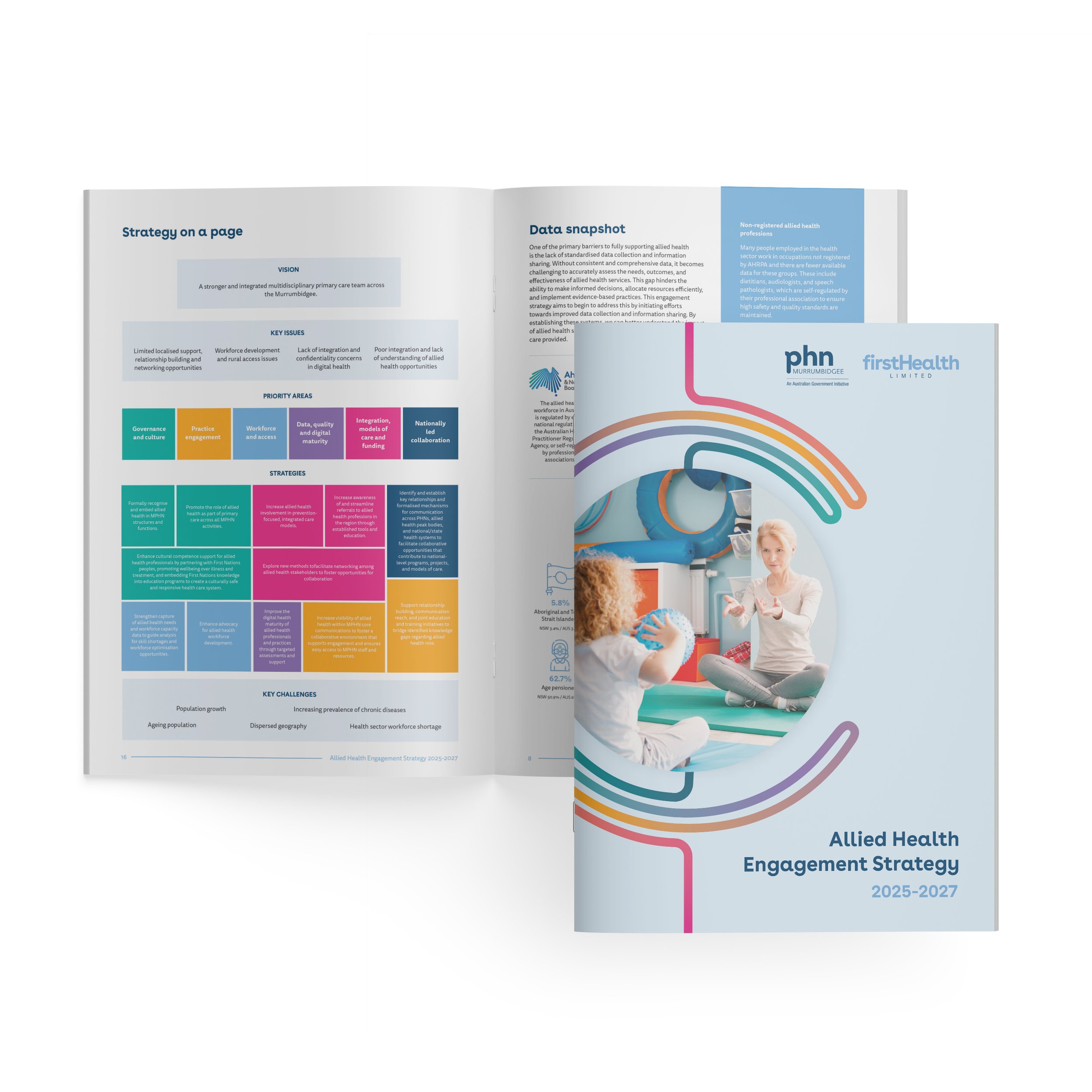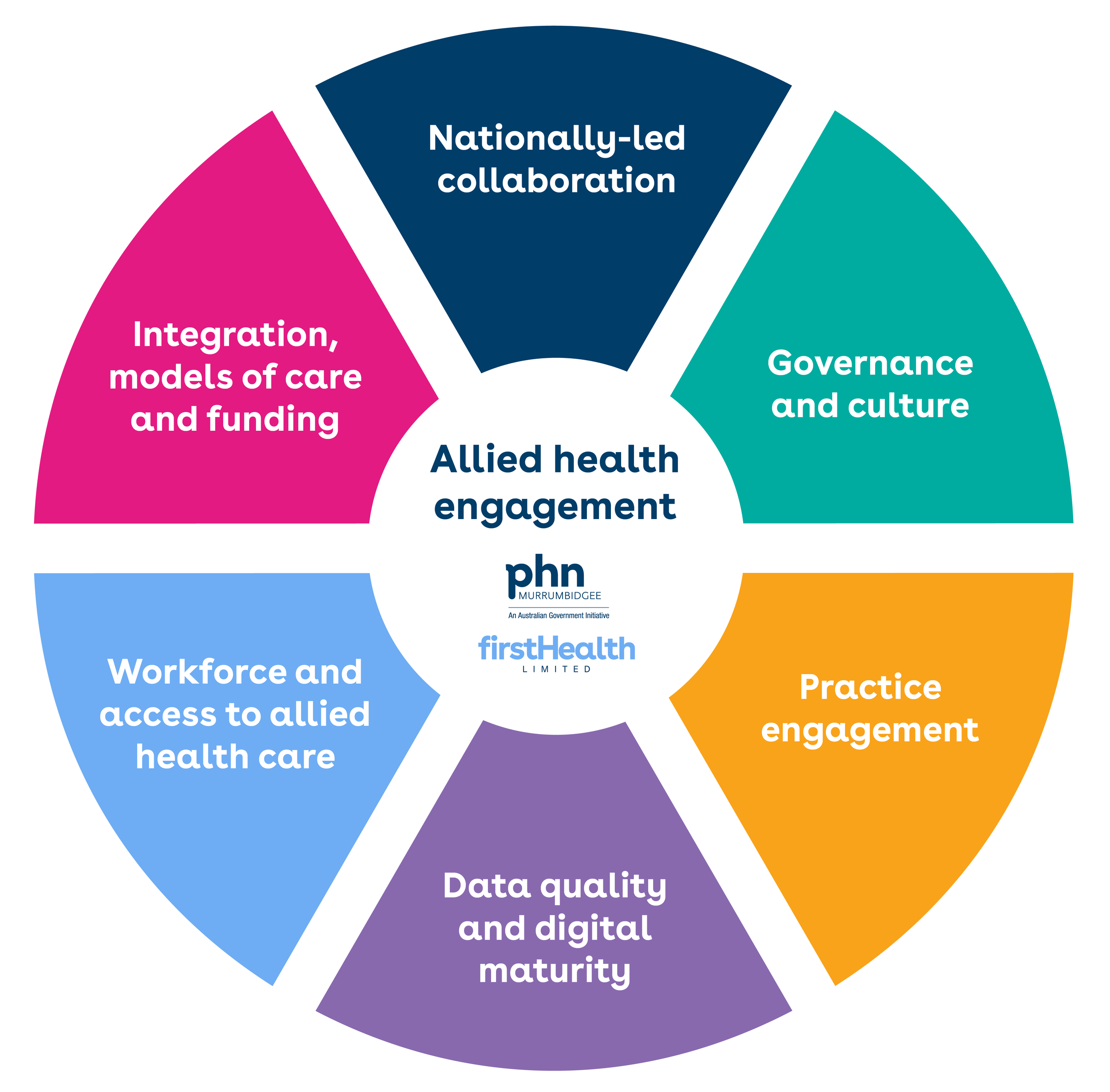Allied Health Engagement Strategy
This Allied Health Engagement Strategy outlines a comprehensive plan to enhance the integration and effectiveness of allied health services within the MPHN. This strategy addresses several key challenges, including the lack of standardised data collection, limited integration within primary care, and significant workforce capacity issues, particularly in rural and regional areas. These barriers hinder the ability to make informed decisions, allocate resources efficiently, and implement evidence-based practices effectively.
Allied health engagement model
MPHN allied health engagement objective
To further enhance and integrate allied health professions as part of primary healthcare. To improve access, outcomes, integration, safety, quality and cost-efficiency across the health system and to embed effective engagement of allied health across the business.
The National PHN Allied Health in Primary Care Engagement Framework seeks to define the scope and role of PHN engagement with allied health, in line with the above shared leadership approach. You can view it here.
Allied health engagement model
Governance and culture
This priority area aims to enhance the role of Allied Health professionals within PHNs by fostering their participation in decision-making processes, education, and collaborative efforts. By recognising the value of Allied Health and promoting cultural competence, PHNs can better address community needs and contribute to a preventive and wellbeing-focused primary healthcare system.
Practice engagement
This priority area aims to enhance allied health practice engagement by implementing effective communication initiatives, strategic workforce development, and tailored support. This includes providing learning and education opportunities for allied health professionals, assisting them in meeting regulatory and clinical requirements, and facilitating improved communication and relationships between primary care sector health professionals
Workforce and access
The priority area aims to collaborate with Allied Health stakeholders to provide innovative solutions to address workforce shortages and improve patient access to allied health services through needs assessment and data collection, workforce initiatives and communities of practice.
Data, quality and digital maturity
This priority area aims to improve the accessibility and uptake of digital health tools to improve integration, patient outcomes and business processes.
Integration, models of care and funding
Through existing integration and collaboration, health pathways, and new models of care, the aim is to enhance Allied Health integration within primary health care settings. This involves strengthening relationships between PHNs, allied health professionals, GPs, state government Local Health Networks/Districts (LHN/Ds), and sector peak bodies. By emphasising funding arrangements that enable integrated care and reducing reliance on GP-only models, evidence-based multidisciplinary team approaches can be better utilised. Additionally, building strong partnerships, improving referrals, and demonstrating the value of allied health services contribute to overall better patient outcomes.
Nationally led collaboration
The aim is to enhance coordination and shared leadership between PHNs and Allied Health (AH). This includes fostering collaboration through the AAHLA, advocating for national issues, and efficiently progressing shared priorities. Additionally, greater coordination with State/Territory forums and stakeholders supports joint planning and resource utilisation.


